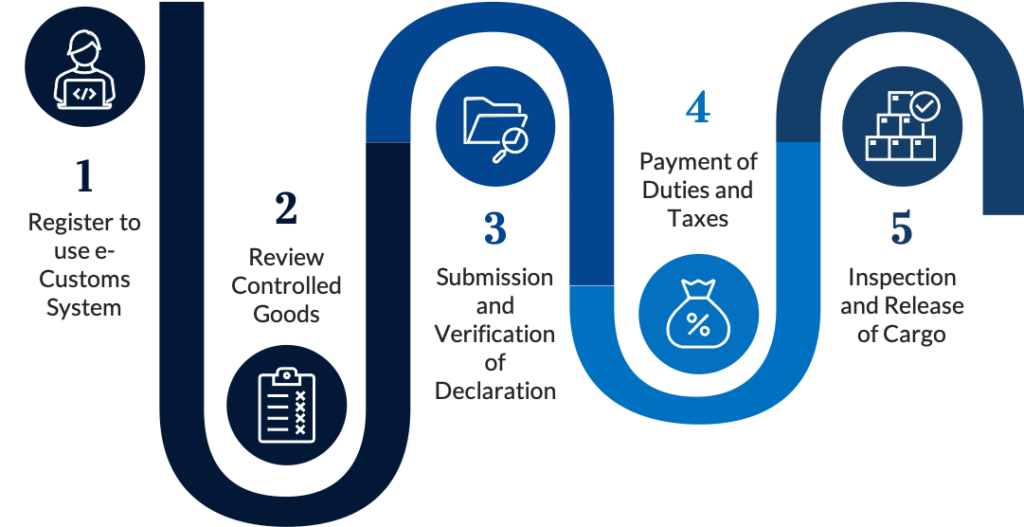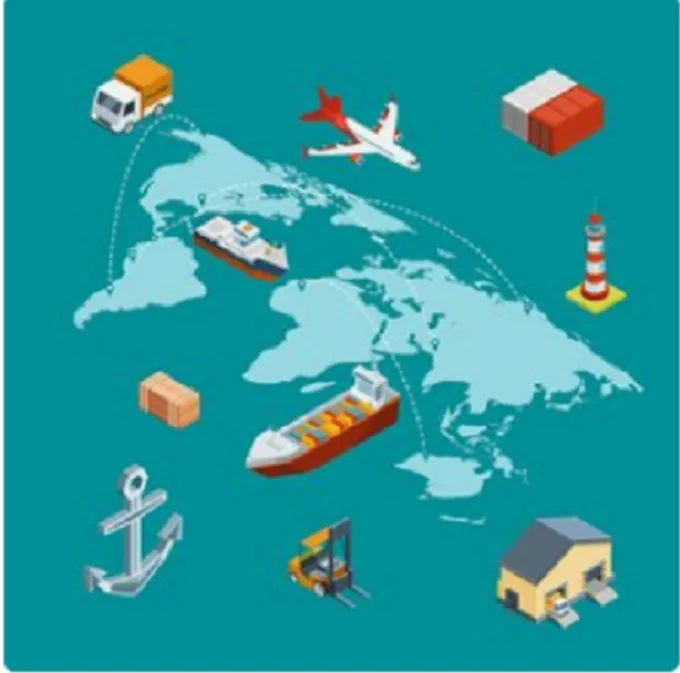Navigating import-export policies is crucial for businesses eyeing Thailand as a market or a trading partner. This blog delves into Thailand’s current import-export regulations, recent updates, and strategic insights to help businesses optimize their operations and stay compliant.
Understanding Thailand’s Import Policies
Thailand, strategically located in Southeast Asia, maintains a robust framework of import regulations designed to facilitate trade while protecting domestic industries and consumers. Key aspects businesses should consider include:
- Tariffs and Duties: Thailand applies tariffs and duties on imported goods, categorized under the Customs Tariff Schedule. The rates vary depending on the type of goods and their country of origin. Recent updates have seen adjustments in tariff rates to stimulate specific industries or align with international trade agreements.
- Customs Procedures: Importers must adhere to stringent customs procedures governed by the Customs Act. This includes declaring goods accurately, paying applicable duties and taxes, and complying with documentation requirements. Thailand has introduced electronic customs clearance systems to streamline processes and reduce clearance times.
- Restricted and Prohibited Goods: Certain goods are restricted or prohibited from being imported into Thailand due to health, safety, environmental, or cultural reasons. It’s crucial for businesses to consult Thailand’s Import Control Committee and the Ministry of Commerce for the latest lists and regulations.

Latest Developments in Thailand’s Export Policies
Thailand’s export policies are designed to promote outbound trade, bolster economic growth, and enhance global competitiveness. Key considerations for exporters include:
- Export Licensing: While most exports from Thailand do not require a license, certain goods such as controlled substances, weapons, and cultural artifacts may require authorization from relevant authorities. The Department of Foreign Trade oversees export licensing and compliance.
- Export Incentives: The Thai government offers various incentives to encourage exports, including tax incentives, financial support, and trade promotion activities. These incentives aim to boost specific sectors identified under the Thailand 4.0 economic model, such as high-tech industries and innovation-driven enterprises.
- Trade Agreements: Thailand is party to several bilateral and multilateral trade agreements, including ASEAN Free Trade Area (AFTA), ASEAN Economic Community (AEC), and Free Trade Agreements (FTAs) with countries like China, Japan, Australia, and New Zealand. These agreements provide preferential tariff rates and market access benefits for Thai exporters.
Strategic Insights for Businesses
To navigate Thailand’s import-export landscape effectively and capitalize on growth opportunities, businesses should consider the following strategic insights:
- Market Research and Compliance: Conduct thorough market research to understand consumer preferences, regulatory requirements, and competitive landscapes in Thailand. Compliance with local laws and regulations is essential to avoid penalties and operational disruptions.
- Partnering with Local Expertise: Engage local consultants, lawyers, and logistics providers with expertise in Thai import-export regulations. They can provide invaluable insights, navigate bureaucratic processes, and ensure seamless operations from customs clearance to distribution.
- Digital Transformation: Leverage digital platforms and technologies for efficient supply chain management, customs clearance, and market expansion in Thailand. The Thai government is investing in digital infrastructure to enhance trade facilitation and connectivity, presenting opportunities for businesses to optimize operations.
Key Considerations for Importers
4. Customs Valuation and Documentation
Thailand adheres to the World Trade Organization’s (WTO) Valuation Agreement for determining the customs value of imported goods. Importers must accurately declare the value of goods to calculate applicable duties and taxes. Documentation requirements typically include:
- Commercial Invoice: Detailing the transaction value of goods, terms of sale, and other relevant information.
- Packing List: Describing the contents, quantities, and weights of packages.
- Bill of Lading/Air Waybill: Providing proof of shipment and details of transport.
Recent developments in Thailand’s customs procedures emphasize the adoption of electronic documentation and automated clearance systems. This shift aims to enhance transparency, reduce paperwork, and expedite customs clearance processes for importers.

5. Regulatory Compliance and Standards
Importers must comply with Thailand’s regulatory standards, which include product safety, quality requirements, and conformity assessments. The Thailand Industrial Standards Institute (TISI) sets national standards for various products, while certain goods may require additional certifications from relevant authorities.
- Product Certification: Certain categories of goods, such as electronics, pharmaceuticals, and food products, require certification from TISI or other regulatory bodies to ensure compliance with safety and quality standards.
- Import Permits and Licenses: Some imported goods, particularly those with health, environmental, or safety implications, may require specific permits or licenses from relevant ministries or agencies.
Staying updated with regulatory changes and obtaining necessary certifications are critical to avoiding delays at customs and ensuring market access for imported goods in Thailand.
Key Considerations for Exporters
4. Export Documentation and Procedures
Exporters from Thailand must adhere to documentation requirements and procedures to facilitate smooth customs clearance and comply with international trade regulations. Essential export documents include:
- Commercial Invoice: Detailing the transaction between the exporter and importer, including goods’ value and terms of sale.
- Certificate of Origin: Providing proof of the origin of goods to qualify for preferential tariff rates under trade agreements.
- Export License (if applicable): Required for goods subject to export control regulations, such as military equipment or sensitive technology.
The Department of Foreign Trade provides guidelines and support to exporters on documentation requirements and export procedures, ensuring adherence to international trade standards and regulations.
5. Trade Agreements and Preferential Tariffs
Thailand’s participation in regional and bilateral trade agreements offers exporters significant advantages, including preferential tariff rates and market access benefits. Key agreements include:
- ASEAN Free Trade Area (AFTA): Facilitates tariff reductions and trade liberalization among ASEAN member states.
- Free Trade Agreements (FTAs): Thailand has FTAs with major trading partners like China, Japan, Australia, and New Zealand, providing preferential access to these markets.
- Generalized System of Preferences (GSP): Offers tariff preferences to exports from developing countries, enhancing Thailand’s export competitiveness globally.
Exporters can maximize these benefits by ensuring products comply with rules of origin and obtaining necessary certifications to qualify for preferential tariffs under trade agreements.
Strategic Insights for Businesses
6. Market Entry Strategies
Entering the Thai market requires careful planning and strategic considerations to navigate regulatory complexities and seize growth opportunities. Key strategies include:
- Partnering with Local Distributors: Collaborating with established distributors or agents in Thailand can expedite market entry, navigate local regulations, and leverage existing networks.
- E-commerce Platforms: Utilizing Thai e-commerce platforms and digital marketplaces can broaden market reach and facilitate direct-to-consumer sales, especially in sectors like consumer goods and electronics.
- Investing in Localization: Adapting products, marketing strategies, and customer service to local preferences and cultural nuances enhances competitiveness and customer engagement in Thailand.
7. Supply Chain Optimization
Efficient supply chain management is essential for minimizing costs, improving delivery times, and enhancing competitiveness in the Thai market. Key considerations include:

- Logistics Infrastructure: Leveraging Thailand’s modern logistics infrastructure, including ports, airports, and distribution networks, to streamline import-export operations and ensure timely deliveries.
- Inventory Management: Adopting advanced inventory management systems to optimize stock levels, reduce storage costs, and meet fluctuating demand in the market.
- Risk Management: Implementing risk mitigation strategies, such as diversifying suppliers and monitoring geopolitical developments, to safeguard supply chain continuity and resilience.
Conclusion
Thailand’s import-export policies are pivotal in shaping its economic landscape and international trade relations. By staying informed about regulatory updates, leveraging export incentives, and adopting strategic approaches, businesses can navigate the complexities of Thailand’s import-export environment effectively. Whether importing raw materials, exporting finished goods, or establishing a presence in Southeast Asia, adherence to Thailand’s import-export policies is essential for sustainable growth and market success.
As Thailand continues to evolve as a regional economic powerhouse, businesses poised to capitalize on its strategic advantages can benefit immensely from a proactive approach to understanding and complying with import-export regulations. Stay updated, stay compliant, and seize the opportunities Thailand offers for international trade and economic expansion.




